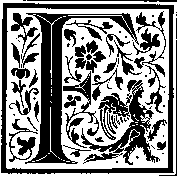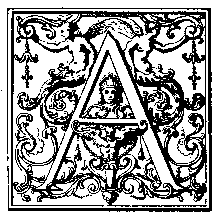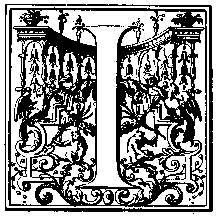The Bar
Mexican-
American
Relations
&
Jude the Obscure
 or the past few weeks, I have been wading through Jude the Obscure by Thomas Hardy. Just last Thursday, Jude Fawley, the young hero, was reciting the many Latin authors (Livy, Tacitus, Herodotus) he was going to be studying over the next few years and --- of a sudden --- he was struck on the head by a hunk of tripe thrown at him by Arabella Donn, the noisy and sexy daughter of a local pigfarmer.
or the past few weeks, I have been wading through Jude the Obscure by Thomas Hardy. Just last Thursday, Jude Fawley, the young hero, was reciting the many Latin authors (Livy, Tacitus, Herodotus) he was going to be studying over the next few years and --- of a sudden --- he was struck on the head by a hunk of tripe thrown at him by Arabella Donn, the noisy and sexy daughter of a local pigfarmer. Knowing Hardy, I suspected that this was to be the beginning of another of those tortured love affairs out of 19th Century Wessex of which he is so fond. Indeed, as I read along, I can understand why one Victorian bishop burned the book in public. It was a clear case of a church official feeling the moral imperative to protect those who might be hurt by such vulgarity (Hardy said he thought it was done "probably in the bishop's despair at not being able to burn me...")
I am not necessarily a fan of Hardy, but Jude cost a quarter at the Ocean Beach Public Library, and I have to have something to do with my time crossing the border between Tijuana and San Diego besides twiddling my thumbs, inhaling great gouts of health-giving smog, and watching the passing circus.
Like the other books I have read over the past ten years at border-crossing time, I get to go through bits and pieces of high literature sandwiched between minding the car to make sure I don't plow into the Land Cruiser in front of me and fretting as to whether the drug doggies are going to make a scene near the wheels of my beat-up old truck because my neighborhood pups are so fond of relieving themselves on my Bridgestones late at night when they should be sleeping or howling at the moon.
This isn't to say that the show outside my car window at the San Ysidro crossing is ever boring. Adam Smith (the Younger) said that the world of finance is ruled by greed on the upside and fear on the downside, and I suspect we border crossers are ruled by the same two-headed Janus.
At any one time, at San Ysidro, depending on the time of day, or the day of the week, there will be between 50 and 3,000 cars --- and the better part of valor is to be in the fastest-moving lane, and to let no one, no one at all, get in front of you. There is always the fear that one will end up in a line that is either run by the wheezy old greybeard agent who spends ten minutes with each car, or --- much worse --- that the car in front of you is one destined to be flagged by the INS Big Brother computer leading to the greatest horror of them all: the agent closing the gate and walking with the car over to secondary and you know you are in for a fifteen or twenty minute hiatus on your journey.
One has to stay put at these times, despite all temptations, because to switch from one line to the next is something only to be done with an Army tank. The moment you turn your wheels and advance an inch or so over towards the right or to the left, the cars over there start to bunch up, putting their bumpers mere millimeters from each other to keep you out. If you go so far as to try to signal or call out, the drivers look away, pretend not to see you, moving towards the gate a mere gnat's width apart, with the precision of a those Blue Angels that do weekend air shows at our local military base. You don't want to push your luck too far by getting out between the lanes, for there you become one of the forlorn and lost of the crossing life: an orphan car, stranded forever between lines that are backed up for a mile, neither in one nor the other --- and unable to get back to either: a hopeless native, who can never return.
 fascinating movie it is, and a morality play, too. We the crossers and the government agents are the principal players, but there are many extras: Mexican ladies in fake nurses's uniforms collecting money (and often directing traffic); rumpled five-year-old kids singing and dancing for coins; sad-eyed Oaxacan women with their youngest and dirtiest on their shoulders, mouthing a por favor and hold out a grubby hand for donations; a man twisted by some terrible disease dragging himself and his tin cup between the cars; a salesman, carrying Bart Simpson in one hand, The Virgin of Guadalupe in the other, ten hats piled atop his head, and a giant plaster Christ cross leaning across his shoulders, complete with gouts of plaster blood.
fascinating movie it is, and a morality play, too. We the crossers and the government agents are the principal players, but there are many extras: Mexican ladies in fake nurses's uniforms collecting money (and often directing traffic); rumpled five-year-old kids singing and dancing for coins; sad-eyed Oaxacan women with their youngest and dirtiest on their shoulders, mouthing a por favor and hold out a grubby hand for donations; a man twisted by some terrible disease dragging himself and his tin cup between the cars; a salesman, carrying Bart Simpson in one hand, The Virgin of Guadalupe in the other, ten hats piled atop his head, and a giant plaster Christ cross leaning across his shoulders, complete with gouts of plaster blood.
Such a mix: Mexican farmers in 1973 trucks with fenders missing and no tail lights; sassy new Alpha-Romeos; huge Holiday Rambler RVs manned by Granny and Granddad, back from Cabo or Múlege or San Felipe; surfers in ridiculously elevated Toyotas with elegant crome suspension (how do they get up into those things?); ladies doing their hair and nails as they inch forward in a 1983 dirty grey Camero; men fiddling with the radios in their Suburbans; kids from the University in a brand new convertible glugging down one last Corona before they reach prohibition. And through it all, the Tijuana police and federales on their bicycles just before the yellow line that is the "real" border, and on the other side of this magic line, U.S. Customs and Immigration in their blue uniforms, with their Marine haircuts and their you're-not-gonna-fool-me eyes. They and their dogs pass in and around the lines, holding up traffic to look inside trunks and terrorize the natives.
The whole panoply of the great mix that is Border Land Drama; certainly as strange as any in Hardy --- or for that matter --- Henry Miller, Bruegel, or the Marx Brothers.
 've been going in and out of Mexico since 1968, which makes me a regular geezer of cross-border memories. I remember going into Tijuana to dine at the old Reno, with its great gold fake statuary, the 19th century country scenes on the wall, the great turquoise stone bathroom, the wonderful Martinis, the superb service, an oasis from dusty, wind-blown Avenida Revolución before it was dandied up for the tourists.
've been going in and out of Mexico since 1968, which makes me a regular geezer of cross-border memories. I remember going into Tijuana to dine at the old Reno, with its great gold fake statuary, the 19th century country scenes on the wall, the great turquoise stone bathroom, the wonderful Martinis, the superb service, an oasis from dusty, wind-blown Avenida Revolución before it was dandied up for the tourists.
I remember when beer was a nickel and Margaritas a quarter. I remember when the Bambi Club was the smokiest, most lurid strip palace for a hundred miles in either direction. I remember the Rio area, filled with shanties made of cardboard and rags (not unlike the ones in the outlying squatters areas of Tijuana today.)
I remember the police hitting you up for a twenty because you went through a stop sign or made an illegal U-turn, and you wouldn't hesitate for a moment to pay the mordita because of all those stories you had heard about the jail in Tijuana --- not knowing, as we do now, that their jails are a damn sight easier to survive in than the ones on this side of the border.
I remember when Puerto Nuevo --- the village an hour south of Tijuana --- consisted of a few cottages that served lobster and flour tortillas in the living room of the house owner. I remember the long stretches of open beach front before the new freeway opened between Tijuana and Ensenada.
Most of all, I remember the ease and casualness of getting over the border, when it was no big deal for Americans or Mexicans, back in the days before the United States and its Moral Imperative created an uglier, a more high stakes crossing.
In all these years, I figure I have crossed over some 5,000 times. Since I am disabled, and since I work in San Diego and live in Tijuana Beach, going by car is the only way I can get back and forth. This means that I cross the border twice a day, ten or twelve times a week, forty or fifty times a month, five or six hundred times a year. I am one of those who are included in the oft-quoted "forty-five million a year" border-crossers at San Ysidro.
Those of us who are old hands have special tricks to make our passage a bit faster because when we add up the total time we've sat in line each year, merely waiting to pass the gate, the figure is staggering. We have to learn tricks so we won't spend all of our lives in that little dirty stretch of asphalt between Tijuana and San Ysidro, between Mexico and the United States, between the Third World and the First.
We know about Gates 12 - 24, with the long line to the right that splits into three and will probably --- but not always --- get us across more quickly. We know that when traffic is backed up around the Great Circle, it helps us to go to the "Zona Fiscal," and make a U-turn, and go under the second underpass to the left, then to be on the right in the lines feeding into Gates 1 - 12, because sometimes they go through as fast.
And we know that if we are in a stupendous hurry, all we have to do is to head into Colonia Libertad, make a U-turn, and double back to the emergency entrance, reserved for VIPs and ambulances. For a hundred pesos or so, the kind guard will usually let you through for this is, after all, still Mexico, where, in a pinch, liberty can --- and on occasion must --- be bought.